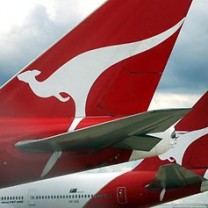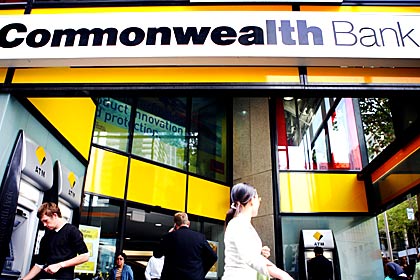Companies
-

Mining swings from profit to loss quickly and without fear or favour. Its always been this way.
Roger Montgomery
September 6, 2012
You might recall back in December (Dec 8, 2011) with FMG trading at $4.84 (now $2.94), BHP at $37.00 ($31.36 today) and RIO at $66.09 ($50.19 today) we warned
“I now wonder whether we are seeing the bubble slip over the precipice? Falling property prices (10 per cent of the Chinese economy) leads to lower construction activity, leads to declining demand for Australian commodities, leads to falling commodity prices, leads to big drops in margins for a sizeable portion of the [Australian stock] market index…”
Since the start of 2012, commodities have, on average, fallen more than 20%, and in some cases much more. This is a pace of decline matched only by that experienced during the financial crisis of 2008.
At current prices many mining companies will now be making losses. As analysts we question the viability of some companies and Atlas Iron for example, one of the largest Iron Ore producers outside of BHP and RIO, may not be without outside help – should prices remain at or below present levels.
by Roger Montgomery Posted in Companies, Energy / Resources, Insightful Insights.
-
GWA – as close to a bond as you can get – pity about the share price
Roger Montgomery
September 3, 2012
Portfolio point: Reporting season is in full swing and there have been some excellent results. We always watch GWA because it’s a company that has the potential to regain its crown but the 2012 results didn’t inspire.
GWA is a leader in the design, manufacture, import and distribution of bathroom & kitchen products, door and access systems, and heating & cooling products. Brand names of these three core building fixtures and fittings divisions include Caroma, Dorf, Fower, Brivis, Dux, Gainsborough and Trilock. Analysis of virtually every financial measure over the past five years has seen GWA demonstrate bond like qualities.
by Roger Montgomery Posted in Companies, Intrinsic Value, Investing Education, Manufacturing.
-

MEDIA
Window Shopping
Roger Montgomery
September 1, 2012
In his September 2012 Money Magazine article Roger outlines ongoing declining prospects for JB Hi-Fi (JBH). Read here.
by Roger Montgomery Posted in Companies, Consumer discretionary, On the Internet.
-

QAN 2012 RESULTS CONTINUED
Roger Montgomery
September 1, 2012
Last week’s reporting results flop for the flying kangaroo set the social web alight, with a mixture of sentiment from followers of this blog, the general public and the mass media alike. The first shots were fired during my impromptu guest appearance on Bloomberg…
The below follows the tale through social media curation platform Storify.
by Roger Montgomery Posted in Airlines, Companies.
- 1 Comments
- save this article
- POSTED IN Airlines, Companies
-

MEDIA
What are Russell Muldoon’s latest insights into Australian residential construction?
Russell Muldoon
August 30, 2012
Do Gerard Lighting Group (GLG), Woodside Petroleum (WPL), Vocus Communications (VOC), CSL (CSL), Credit Corporation (CCP), Silex Systems (SLX), Boart Longyear (BLY), Mineral Holdings (MIN) and NRW Holdings (NWH) make the coveted Skaffold A1 score? Watch this edition of Sky Business’ Your Money Your Call broadcast 25 July 2012 to find out, and also learn Russell’s thoughts on the state of the Australian residential construction market. Watch here.
by Russell Muldoon Posted in Companies, Insightful Insights, Intrinsic Value, TV Appearances.
-

Reporting Season – Emerging Conclusions
Tim Kelley
August 30, 2012

Reporting season is a busy time for us at Montgomery Investment Management. Studying results announcements is one of the ways we try keep on top of what is happening in the market and identify economic trends and investment opportunities.
We do this in a fairly systematic way. Every day we review, evaluate and catalogue every last results announcement made that day. As I write, we have reviewed several hundred sets of financial statements and the accompanying commentary, representing around $700B of aggregate market capitalisation, with many more still to come.
This analysis draws our attention to individual companies that are performing well, and complements the automated stock screening tools we use, including Skaffold. It also gives us a sense of broader economic trends and the relative health of different parts of the economy.
by Tim Kelley Posted in Companies, Insightful Insights, Market Valuation.
-

China Rongsheng Heavy Industries (CRHI), Part 3
Roger Montgomery
August 27, 2012
Earlier this month we warned readers of the highly attractive pre-delivery finance CRHI was offering customers to win market share. The downturn in the Chinese shipbuilding industry and slippage in vessel delivery saw the Company, for the 6 months to June 2012, report an 82% decrease in net profit on a 37% decline in revenue to RMB5.5b (US$865m). The deterioration in CRHI’s finances over the past eighteen months has been extraordinary: net debt/ equity has jumped from 40% to 143% (US$3.55b/$2.5b), receivables have risen dramatically to RMB4.4b (US$700m), while receivable days have increased from 10 days to 125 days. Over one-third of the receivables are past 180 days, and half of this is past 360 days.
With its eroding credit worthiness, China Rongsheng Heavy Industries has seen its share price decline from HK$8 in late-2010 to HK$1 and it is now selling at 40% of its book value. We will be closely monitoring other Chinese-based steel, cement and shipbuilding companies, especially in the context the iron ore price has just breached the psychologically important US$100/tonne.
by Roger Montgomery Posted in Companies, Insightful Insights, Manufacturing.
-


WHITEPAPERS
Good things to come at ASR?
Tony Featherstone
August 24, 2012
Like many Australian industries, the share registry sector is dominated by two giants: Computershare and Link Market Services. The much smaller Advanced Share Registry (ASR) barely rates by comparison, but is well positioned for faster growth when the sharemarket recovers.
A weak sharemarket is a big headwind for share registries, which update and manage company share registers. Fewer initial public offerings (IPOs) and corporate actions, such as rights issues and meeting notices, means less demand for additional share registry services.
ASR’s challenge is compounded by its exposure to smaller resource companies. The Perth-based share registry might struggle if more listed explorers go into their shell, to preserve cash.
Share registries can be great businesses. Computershare’s return on equity has averaged 28.1 per cent over its last four financial years and it is capitalised at $4.2 billion, Skaffold data shows. However, its average annual total shareholder return over five years is negative 3.2 per cent.by Tony Featherstone Posted in Companies, Whitepapers.
- 3 Comments
- save this article
- POSTED IN Companies, Whitepapers
-

Reporting season avalanche turns up another gem
Roger Montgomery
August 21, 2012
Since reporting season rolled into full swing, we have covered 130 individual annual reports of companies we like to varying degrees.
Twenty-four of those have made the grade for further research and modelling. Some of them we have purchased in the past few weeks and some we have already been holding for a while. This update concerns one of Montgomery’s holdings McMillan Shakespeare (ASX MMS).Management just reported (after the market close) NPAT of $54.3m – up 25% from last year and diluted earnings per share (EPS) growth of 21%. This is significantly ahead of market expectations for the full year and management’s focus on Salary Packing and Fleet Management Services continues to pay off.
continue…by Roger Montgomery Posted in Companies, Market commentary.
- 2 Comments
- save this article
- POSTED IN Companies, Market commentary
-

Australian Bank results show 1 Speed Aussie economy – SLOW
Roger Montgomery
August 20, 2012
The full year result by CBA recently was a good reflection of the level of growth Australia is currently experiencing – low. The banks reported cash NPAT was up just 4% for the full 12 months or $278m to $7.1b. However, if we back out the 15% reduction in loan impairment expenses, $191m, despite the oligopoly the big 4 have in Australia, the best they could manage was growth overall of 1-2% in banking, funds management and insurance. The 15% improvement in credit quality was definitely a surprise in the result given the scores of jobs losses recently. A development we continue to monitor closely.
by Roger Montgomery Posted in Companies, Market Valuation.
- 1 Comments
- save this article
- POSTED IN Companies, Market Valuation